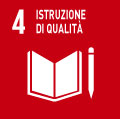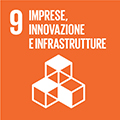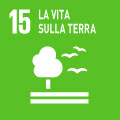- Docente: Paolo Tortora
- Crediti formativi: 6
- SSD: ING-IND/05
- Lingua di insegnamento: Inglese
- Modalità didattica: Convenzionale - Lezioni in presenza
- Campus: Bologna
-
Corso:
Laurea Magistrale in
Astrophysics and Cosmology (cod. 5828)
Valido anche per Campus di Forli
Laurea Magistrale in Aerospace Engineering (cod. 5723)
Campus di Forli
Laurea Magistrale in Aerospace Engineering (cod. 5723)
-
dal 19/09/2024 al 16/12/2024
Conoscenze e abilità da conseguire
In the first part of the course, the student acquires fundamentals on systems engineering of space systems and the key aspects of spacecraft systems design. He/she will also learn the design considerations which come into play in laying out a space mission and its preliminary design. In the second part of the course, students are taken step-by-step through the complete process of creating and evaluating multiple methods for reducing space mission cost and schedule and critically evaluate alternative ways of achieving mission objectives at dramatically lower cost and in much less time.
Contenuti
The course covers the design of spacecraft subsystems and space missions with the small satellite landscape as a backdrop. The course comprises of several lectures that are intended to familiarise the students with systems engineering practises and tools, subsystem sizing and design, current industry trends and state-of the art research in small satellite engineering. Exercises and assignments are designed to foster peer and collaborative learning.
The course will enable students to design and engineer small satellite missions. The high-level learning objectives of the course are:
The students shall be able to
- explain the main aspects of small satellite missions
- appreciate the usage of systems engineering methods and practises
- explain and describe elements in the architecture of a spacecraft mission
- present and defend their design of an element in the architecture of a spacecraft mission
- show familiarity with current trends in space industry and small satellite research
Testi/Bibliografia
References to specific literature will be provided during corresponding lectures.
Prerequisites
- General mathematical, physical and engineering knowledge from completed BSc study.
- Basics of Astrodynamics
Metodi didattici
With the intention to improve the analytical thinking among students, to motivate the students to be proactive and take control of the learning process, and to foster cooperative learning, the following teaching methods will be employed in the course:
- Lectures
- In-class exercises
- Student presentations and peer feedback and evaluations
- Group work
Modalità di verifica e valutazione dell'apprendimento
There will be two assessment components – An Individual Assignment and a Group Assignment. Additionally, in-class participation can result in bonus points.
Individual assignment
The individual assignment, for example in the form of a journal paper review or a subsystem design exercise, will test
- The ability of the student to identify and explain key aspects of satellite missions based on the lectures
- The ability of the students to draw inferences from the material presented in the lectures
- The ability to critically evaluate space system and sub-system design
The scope of the assignment will be mainly restricted to the content delivered and discussed during the lectures. However, there could be topics that test basic and general aspects in the context of space mission analysis and design.
Group assignment
As a deliverable of the group work, each group will deliver a final report or demonstration that will be evaluated for
- Project planning and management
- Presentation and defence of the work
- Application of Systems engineering methods
- Functionality/feasibility of the work
- Independence and creativity
Strumenti a supporto della didattica
LCD projector and PC are used in addition to the standard blackboard.
Orario di ricevimento
Consulta il sito web di Paolo Tortora
SDGs



L'insegnamento contribuisce al perseguimento degli Obiettivi di Sviluppo Sostenibile dell'Agenda 2030 dell'ONU.
